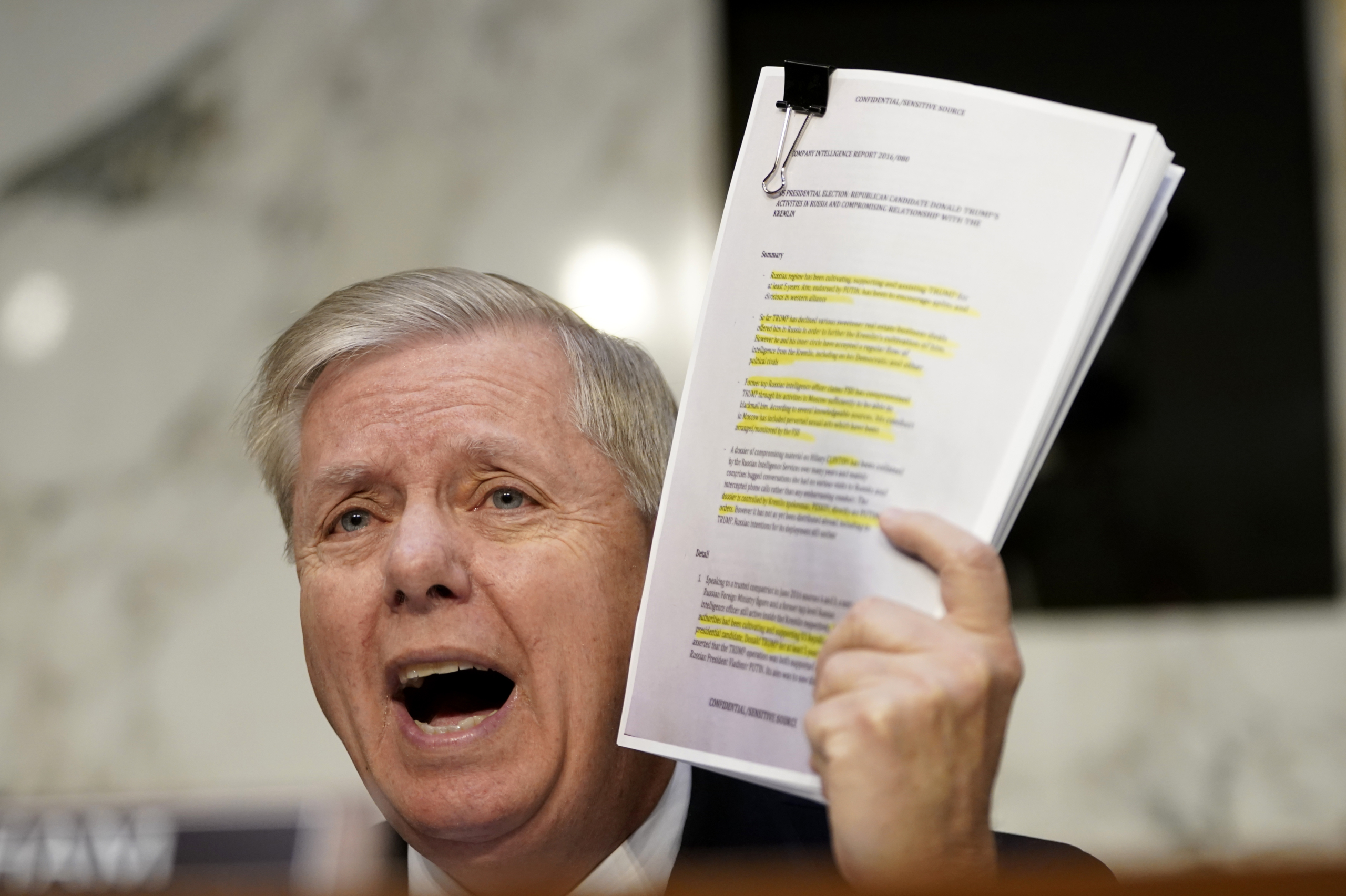In some other media climate, the Washington Post’s decision to correct and remove chunks of its coverage of the Steele dossier last week would have been seismic.
Six months into the tenure of Executive Editor Sally Buzbee the Post has admitted publicly that key reporting on one of the biggest stories of the Trump years was wrong.
At issue was the 35-page “dossier,” first published by BuzzFeed News in January 2017, which aired murky intelligence gathering that showed nefarious links between Donald Trump and Russia.
A federal indictment and two investigations into the dossier have severely undermined it, and the Post was forced to acknowledge that a man it named as a source for the document was, in fact, not. As a result, portions of two Post stories about the dossier and a video were removed, and an editor’s note was attached noting, in one case, that reporting in the story had been contradicted by a federal indictment and “undermined by further reporting by The Washington Post.”
The Post also published a news story about its decision. “It’s rare for a publication to make wholesale changes after publication and to republish the edited story, especially more than four years afterward,” Paul Farhi wrote.
But the collapse of the dossier’s credibility goes beyond the Post, to Mother Jones and the Wall Street Journal, to ABC and CNN, among others. And to Ben Smith, whose decision to publish the document in its entirety while editor of BuzzFeed News kicked off the whole mess. Smith is now the scoop-machine media columnist for the Times, putting that newspaper at the center of a bit of Trump weirdness its reporters had previously managed to avoid.
The Post was just the first out of the gate; others will almost certainly follow. Implicated, too, is the rest of the media commentariat, who until recently have kept relatively quiet about these failures.
While the afterlife of the dossier has been chronicled by a few media folks–including Erik Wemple of the Post and writers Marcy Wheeler, Matt Taibbi, and Aaron Maté–it has, until very recently, been largely shrugged off outside of the conservative press.
For decades, I’ve followed media screw-up scrums, the pile-ons that tend to follow the embarrassments of big-name reporters and newsrooms. (Even more so since the rise of social media.)
One could imagine the unraveling of the initial credulous hysteria around the dossier among them. A media, desperate for the fall of Trump, buying into a document that was never designed to meet the standards of good journalism.
But it has, until the last few days,escaped that level of hand-wringing, perhaps due to tribalism. When news of the dossier broke, media Twitter broke out with its performative gasps. It felt like the dossier was expressing what an awful lot of reporters felt in their bones to be true. Few of those mainstream reporters want to join the chorus, led by Sean Hannity and his conservative colleagues, that has long been saying–correctly–that the dossier was overblown.
(Even CJR has its own mini-role in this drama. Shortly after Smith published the dossier in BuzzFeed, CJR backed his decision. The decision to publish, we wrote, would not have been appropriate for The New Yorker or the Times, but was right for BuzzFeed and its audience.)
Wemple, whose log of stories about the dossier is the definitive compilation of what’s been wrong with the reporting, believes its unraveling was hidden by a dizzying news cycle.
One of the documents most damning to the dossier’s veracity was released in December 2019, in a report by the Justice Department’s inspector general. As that was happening, Congress, and the press, was deeply enmeshed in the impeachment process, and the unraveling of the dossier was lost in the noise. “It’s part of the media’s failure to walk and chew gum at the same time,” Wemple told me in a phone call this week.
Now, a moment of reckoning is upon us. Axios published a piece over the weekend calling the dossier “the media’s epic fail.” Bill Grueskin, a Columbia Journalism School colleague who has written frequently for CJR, wrote an op-ed in the Times asking “How did so much of the media get the Steele dossier so wrong?”
It seems reasonable to ask whether, knowing what we know now, the dossier should have been published at all. I think the answer, in hindsight, has to be no.
So far, Smith hasn’t recanted his decision. He even smells some hypocrisy in the fact that mainstream news organizations are now dancing on the dossier’s carcass; he told me that these same outlets used the fact that BuzzFeed published to feed their own, endless loop of commentary about the document while enabling them to keep their distance from the thing. Legacy outlets could tut-tut at the digital hordes while benefiting from their looser publishing standards.
To me, the dossier is a useful stand-in for the media’s coverage of Trump in general. While there was an enormous amount of impressive investigative work around Trump and his many misdeeds, there was also, especially on cable news, a lot of nonsense and misdirection.
Like Trump himself, we tacked to the extremes. When the right place to be, as always, is in the messy space in between.
Kyle Pope was the editor in chief and publisher of the Columbia Journalism Review. He is now executive director of strategic initiatives at Covering Climate Now.


